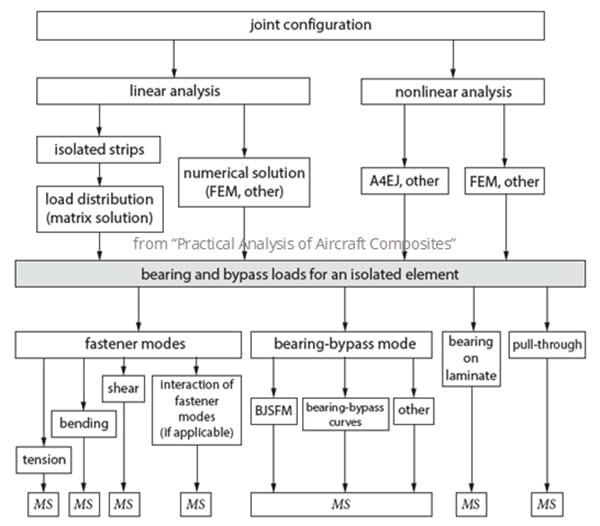Statiker57
Aerospace
Does anyone know of a good method or program to allow me to calculate the MS (or RF) for a bolted joint in a composite structure? I have a multi bolt joint between two sheets that I need to check for all possible failure modes (eg bearing, bearing/bypass, shear-out etc etc) considering the bolt loads and bypass loads. I want to avoid reverting to a FEM if possible. I've worked with some OEMs in the past that had their own in-house methods and programs but I can't use these for this Project so need something that is in the public domain. Thanks.

